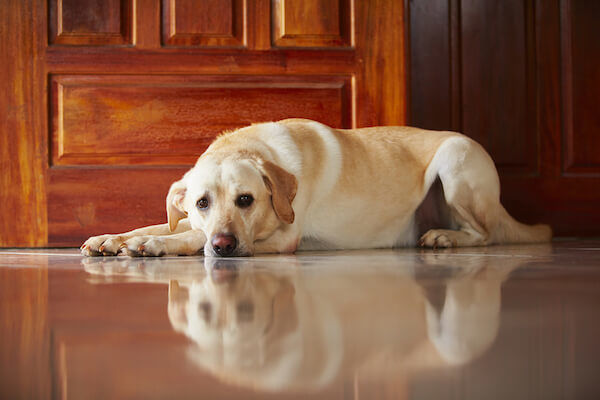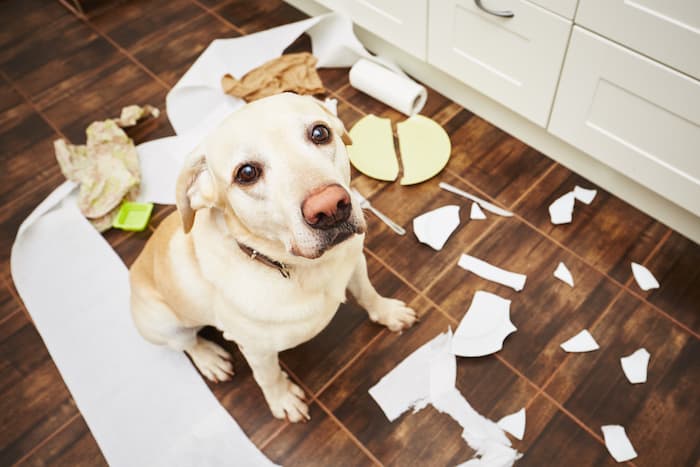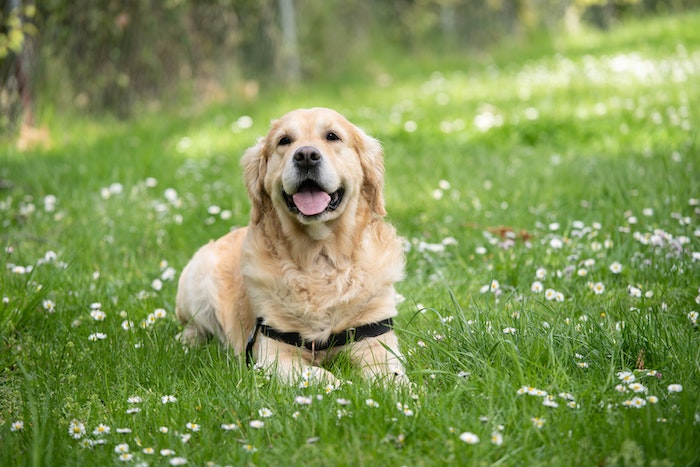Separation anxiety is a common behavioral issue that many dogs experience when they are separated from their owners or left alone. Dogs are social animals and thrive on the companionship and presence of their human family members. When they are unable to be with their owners, they may exhibit various signs of distress and anxiety. Recognizing these signs is crucial in identifying separation anxiety and implementing appropriate strategies to help dogs cope with their anxiety. In this article, we will explore the signs of separation anxiety in dogs and discuss each topic in detail.

Recognizing the Signs of Separation Anxiety
- Excessive Vocalization: Dogs may bark, howl, or whine excessively when separated from their owners.
One of the prominent signs of separation anxiety in dogs is excessive vocalization. When dogs are separated from their owners, they may bark, howl, or whine excessively in an attempt to seek attention or express their distress. This vocalization may be accompanied by pacing, restlessness, and other anxious behaviors. It is important to distinguish this type of vocalization from normal barking due to other reasons, such as alerting to strangers or territorial behavior. Understanding the context and frequency of the vocalization can help determine if it is related to separation anxiety.
- Destructive Behavior: Chewing furniture, scratching doors, or digging at carpets are common signs of separation anxiety.
Destructive behavior is another hallmark sign of separation anxiety in dogs. When dogs feel anxious or stressed due to being left alone, they may engage in destructive behaviors as a way to cope with their emotions. Chewing furniture, scratching doors, or digging at carpets are common manifestations of this behavior. The act of destructive chewing can provide dogs with a temporary relief from their anxiety, but it can result in damage to your belongings. It is important to address this behavior by providing appropriate outlets for chewing and implementing behavior modification techniques.
- Pacing or Restlessness: Dogs with separation anxiety may exhibit constant movement, restlessness, or an inability to settle down.
Dogs with separation anxiety often exhibit pacing or restlessness when they are left alone. They may walk back and forth, follow a repetitive pattern, or exhibit an inability to settle down. This constant movement is a reflection of their inner turmoil and anxiety. Pacing or restlessness can be observed in various areas of the house, such as near doors or windows, as dogs try to find ways to escape or seek their owners. Recognizing this behavior can help differentiate separation anxiety from other causes of restlessness in dogs.
- House Soiling: In severe cases, dogs may urinate or defecate indoors as a result of anxiety and stress.
House soiling, such as urinating or defecating indoors, can be a distressing sign of separation anxiety. When dogs experience extreme anxiety and stress due to being left alone, they may lose control of their bladder or bowels. This behavior is not a result of disobedience or lack of house training, but rather a manifestation of their overwhelming emotions. House soiling may occur even in dogs that have been previously house trained. It is important to address this issue with patience, understanding, and appropriate training methods.

Steps to Help Your Dog with Separation Anxiety
Dealing with separation anxiety in dogs requires a thoughtful and patient approach. By implementing the following steps, you can help alleviate your dog’s anxiety and promote their well-being:
- Establish a Routine:
Create a consistent routine for your dog’s daily activities, including feeding, exercise, and alone time. Use a dog walking service if you do not have time. A predictable routine provides a sense of security and stability, helping to reduce anxiety. Feed your dog at the same time each day, provide regular exercise sessions, and allocate specific periods for alone time. Gradually introduce and maintain this routine to help your dog feel more comfortable and secure.
- Gradual Departures and Returns:
Start with short periods of separation and gradually increase the duration as your dog becomes more comfortable. Begin by leaving your dog alone for just a few minutes and then gradually extend the time. During departures and returns, keep interactions low-key to avoid reinforcing anxiety. Ignore attention-seeking behaviors and wait for your dog to calm down before providing attention or affection.
- Desensitization:
Desensitization involves gradually exposing your dog to the triggers of their anxiety while providing positive associations and rewards for calm behavior. Begin by performing simple actions associated with departure, such as picking up keys or putting on your coat, without leaving. Over time, increase the duration of these activities while ensuring your dog remains calm and relaxed. Provide treats or rewards during the process to reinforce positive associations with being alone.
- Environmental Enrichment:
Provide your dog with stimulating and engaging activities during their alone time to keep their minds occupied and reduce anxiety. Interactive toys, puzzles, or treat-dispensing toys can help provide mental stimulation and a positive distraction. Consider toys that require problem-solving or ones that can be filled with treats to keep your dog entertained and engaged.
- Create a Safe Space:
Designate a specific area in your home where your dog feels secure and comfortable. This can be a crate, a cozy corner with their bed and favorite toys, or a specific room. Ensure the space is safe, free from hazards, and contains familiar scents and objects that provide comfort. Encourage your dog to spend time in this space voluntarily and associate it with positive experiences.
- Counterconditioning:
Counterconditioning involves replacing your dog’s anxious response with a positive emotional state by pairing the trigger of anxiety with something pleasant. For example, before leaving, provide a special treat or engage in a fun activity with your dog. This positive association helps to alleviate anxiety and create a more positive outlook towards being alone.
- Seek Professional Help:
If your dog’s separation anxiety is severe or persistent despite your efforts, it may be beneficial to consult with a professional dog trainer or veterinarian specializing in behavior issues. They can assess your dog’s specific situation, provide tailored guidance, and suggest potential interventions, such as medication or behavior modification techniques, if necessary.
- Stay Calm and Patient:
Dealing with separation anxiety can be challenging, but it’s important to remain calm and patient throughout the process. Dogs are sensitive to our emotions, and displaying anxiety or frustration can exacerbate their own anxiety. Provide reassurance through a calm and confident demeanor and celebrate small victories along the way. Remember, overcoming separation anxiety takes time and consistent effort.
Implementing these steps can significantly improve your dog’s separation anxiety. Be persistent, adjust strategies as needed, and monitor your dog’s progress. With time, patience, and a supportive approach, you can help your dog feel more comfortable and secure during periods of separation.

FAQs and Answers about Helping Dogs with Separation Anxiety:
Q – Can establishing a routine really help with separation anxiety?
A – Yes, establishing a consistent routine can help reduce anxiety in dogs. A predictable schedule provides structure and stability, reassuring the dog that their needs will be met and easing their anxiety.
Q – How long does it take to see improvements in a dog’s separation anxiety?
A – The timeframe for seeing improvements in separation anxiety can vary depending on the dog and the severity of their anxiety. It may take several weeks or even months of consistent training and behavior modification techniques to see significant progress.
Q – Is it necessary to consult a professional for separation anxiety in dogs?
A – In severe or persistent cases of separation anxiety, seeking professional help is recommended. A professional dog trainer or veterinarian specializing in behavior issues can provide guidance, assess the specific situation, and suggest appropriate interventions.
Q – Can medication help with separation anxiety in dogs?
A – In some cases, medication may be recommended to help manage the symptoms of separation anxiety in dogs. It can be used in conjunction with behavior modification techniques to help the dog feel more calm and relaxed during periods of separation.
Q – Are there any natural remedies or supplements that can help with separation anxiety?
A – Some natural remedies or supplements, such as lavender oil or herbal supplements, may have calming effects on dogs. However, it is important to consult with a veterinarian before introducing any new remedies or supplements to ensure they are safe and appropriate for your dog.
Q – Will crate training help with separation anxiety?
A – Crate training can be beneficial for some dogs with separation anxiety as it provides them with a safe and secure space. However, it is essential to introduce crate training gradually and in a positive manner to prevent it from becoming a source of additional stress or anxiety for the dog.
Related Reading
